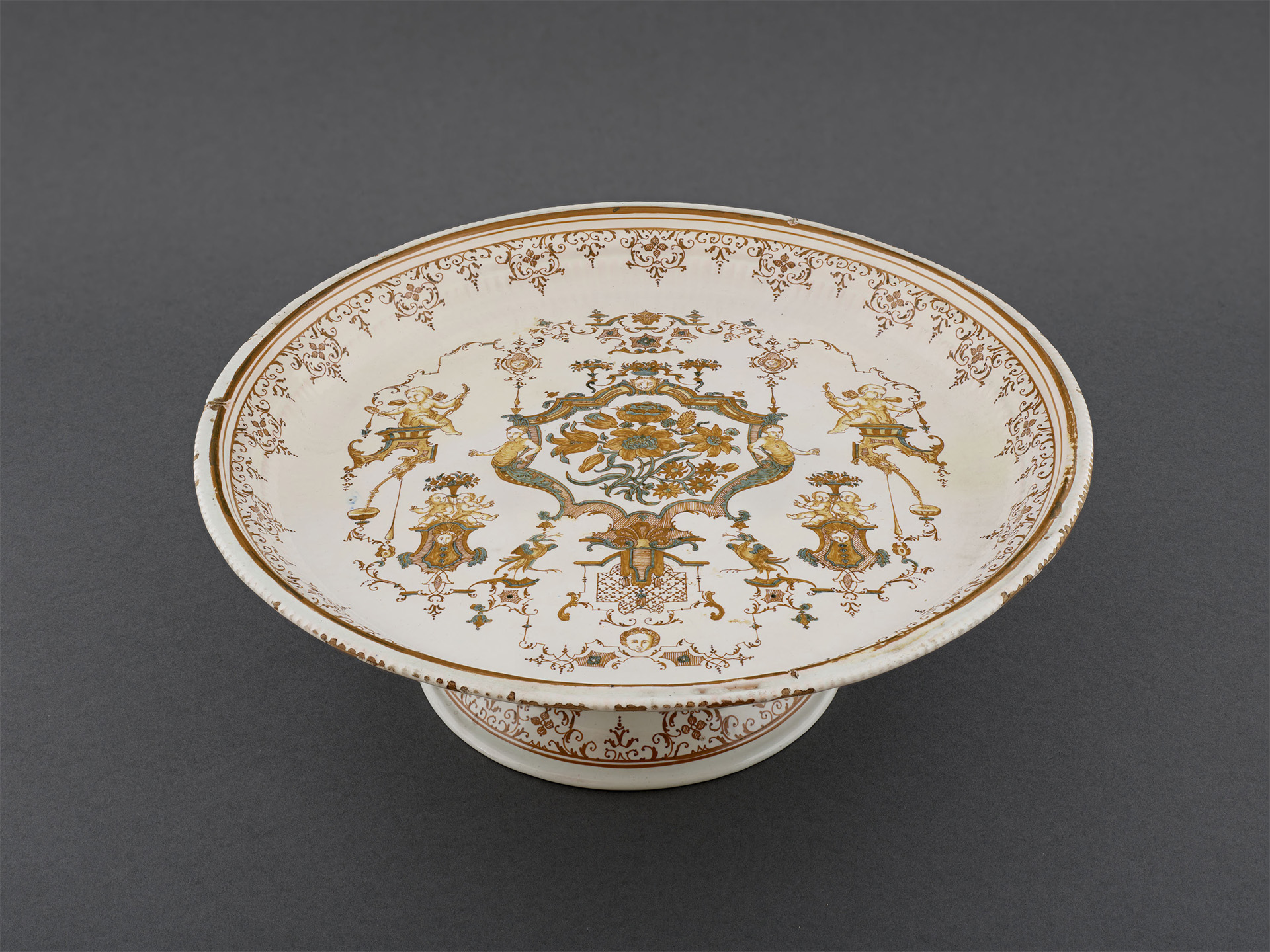
Manufactura de Alcora
Standing salver
Bérain-style series (1730-1745)
WORK INFORMATION
Ceramic, orange- and green-decorated earthenware, diam. 27.5 cm
The Alcora manufactory was founded in 1727 by the 9th Count of Aranda on land he owned in what is now the province of Castellón. The aim was to create a luxury earthenware and porcelain factory that would compete with foreign manufactories. Royal privileges, including tax exemption on the export of pieces and the free entry of materials from abroad, allowed this manufactory to operate until the middle of the 19th century despite the fact that it barely made any profits.
Throughout its existence, the factory became a model of organisation and a point of reference in terms of aesthetics thanks to the recruitment of foreign specialists, artists and “secretists” who claimed to know the secret of porcelain manufacture. In addition, the creation of an apprentice academy enabled the manufactory to continue to provide top quality production.
From its foundation and throughout its first period (1727-1749), it was run by foreign artists who were responsible for setting the standard for the different ornamental styles. Édouard Roux, director of the factory between 1728 and 1735, introduced decorative motifs and forms from the manufactories of southern France. All these models were faithfully copied at Alcora and, as they spread throughout the rest of the country, they were assimilated by other pottery centres in more popular versions.
This standing salver is in the Bérain style, named after its creator Jean Bérain (1640-1711). The designs of this decorator of Louis XIV’s chamber and cabinet at Versailles became known from 1711 onwards through the engravings that were made of them. Their origin is to be found in classical antiquity: during the 16th century, frescoes decorated with grotesques were discovered in Rome in Nero’s house, the Domus Aurea, from which Raphael drew inspiration when he decorated the loggias of the Vatican. These stately and grandiloquent ornaments are characterised by the presence of arabesques, hangings, baldachins, sphinxes, water features, floral vases, busts, monkeys, garlands, lambrequins, caryatids, figures, mermaids and mascarons.
The symmetrical compositions of grotesques are framed by rigorously drawn lace borders inspired by the decoration of books and the engravings of jewellers and ornamentalists. This shows how ornamental motifs from Renaissance Italy were integrated into the French Baroque spirit.
In the central space of this orange-and-green decorated salver is a multi-lobed medallion filled with naturalistic flowers, flanked by an Atlas on either side and crowned by a mascaron. The decoration on the brim and foot of the salver consists of a lace border characteristic of the Bérain style. Polychrome pieces like this one are the rarest in this style.

